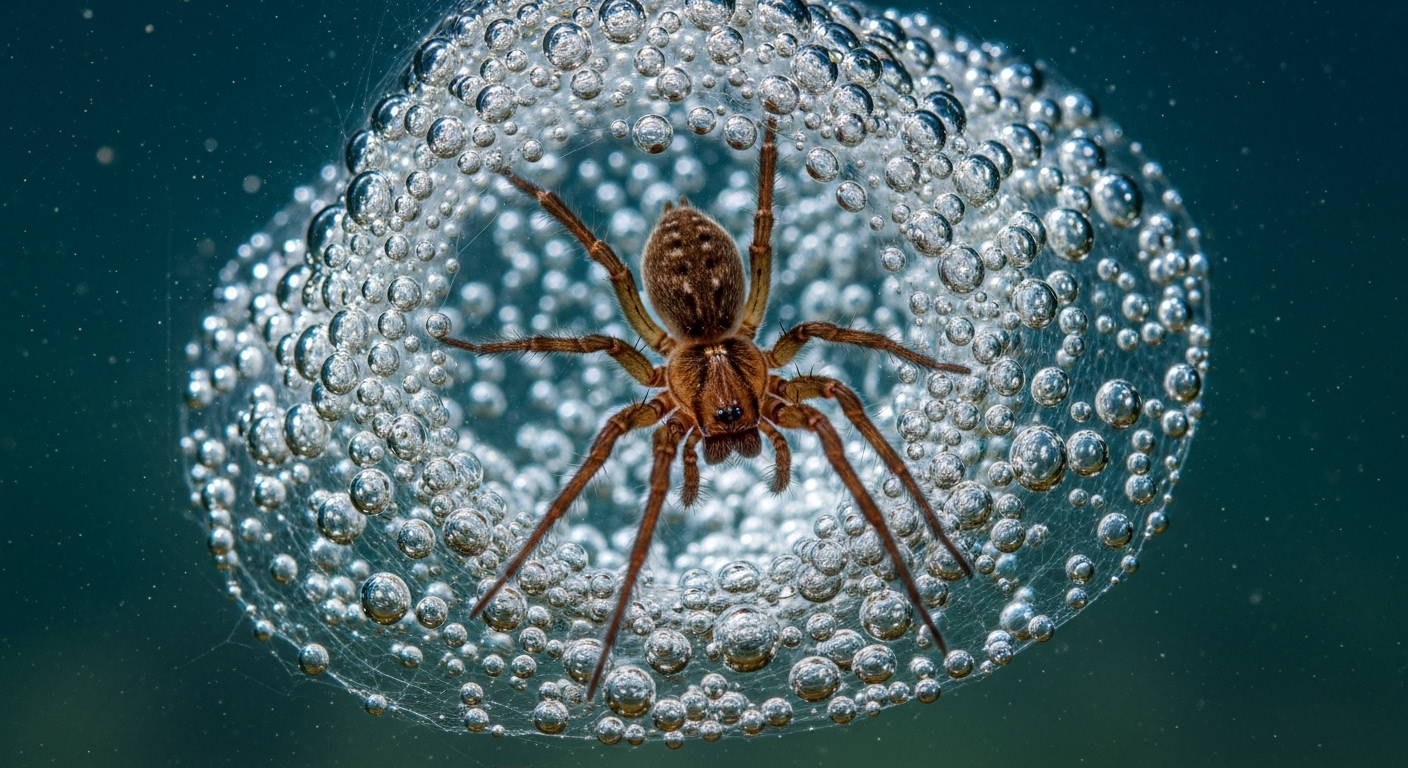Aquatic Arachnids: The Fascinating World of Diving Bell Spiders
Beneath the tranquil surface of freshwater ponds and lakes, an extraordinary creature defies our expectations of arachnid life. The diving bell spider, Argyroneta aquatica, is the only known spider species to spend its entire life underwater. This remarkable adaptation has captivated researchers and nature enthusiasts alike, offering a unique glimpse into the diverse strategies life employs to thrive in unexpected environments.

The Diving Bell: Nature’s Scuba Tank
At the heart of the diving bell spider’s survival strategy lies its eponymous diving bell. This remarkable structure is a testament to the spider’s ingenuity and adaptability. The spider creates its underwater sanctuary by spinning a dome-shaped web between aquatic plants, then filling it with air bubbles collected from the water’s surface.
The diving bell serves multiple purposes. Primarily, it acts as an oxygen reservoir, allowing the spider to breathe underwater for extended periods. The bell’s silk walls are permeable, enabling gas exchange with the surrounding water. As oxygen is depleted within the bell, dissolved oxygen from the water diffuses through the silk, replenishing the spider’s air supply.
Underwater Web-Spinning Techniques
The diving bell spider’s web-spinning abilities are truly extraordinary when considering the aquatic environment in which they operate. Unlike their terrestrial cousins, these spiders must contend with water currents and buoyancy while constructing their silk structures.
To create their underwater homes, diving bell spiders use specialized silk glands that produce waterproof fibers. This hydrophobic silk allows them to trap and maintain air bubbles effectively. The spiders carefully weave their webs between aquatic plants, creating a stable framework for their diving bells.
Hunting and Feeding Habits
Despite their aquatic lifestyle, diving bell spiders remain true predators. They have adapted their hunting techniques to suit their underwater habitat, preying on small aquatic insects, crustaceans, and even tiny fish. Their keen eyesight and sensitive leg hairs help them detect vibrations in the water, alerting them to potential prey.
When hunting, diving bell spiders often leave the safety of their air-filled retreats to pursue prey. They can swim short distances using their legs, propelling themselves through the water with surprising agility. Once they capture their prey, they return to their diving bells to consume their meal in the safety of their air-filled sanctuary.
Reproduction and Life Cycle
The reproductive behavior of diving bell spiders is as fascinating as their underwater adaptations. Male spiders construct their own small diving bells near those of females, initiating courtship rituals that involve complex underwater movements and vibrations.
After mating, the female creates a special nursery bell to house her eggs. This nursery is larger and more robust than typical diving bells, providing a safe environment for the developing spiderlings. The female remains vigilant, guarding her eggs until they hatch. Once the young spiders emerge, they quickly disperse to create their own miniature diving bells, beginning the cycle anew.
Conservation Challenges and Future Prospects
Despite their remarkable adaptations, diving bell spiders face numerous challenges in today’s changing aquatic ecosystems. Water pollution, habitat destruction, and climate change all pose significant threats to these unique arachnids. The loss of suitable aquatic vegetation for web construction and declining water quality in many freshwater habitats have led to concerns about the long-term survival of these species.
Conservation efforts focused on preserving and restoring freshwater ecosystems are crucial for the continued existence of diving bell spiders. Research into their specific habitat requirements and population dynamics is ongoing, with scientists working to better understand how to protect these fascinating creatures.
The diving bell spider stands as a testament to the incredible diversity of life on our planet. Its ability to carve out a niche in an environment typically hostile to arachnids showcases the power of evolutionary adaptation. As we continue to explore and understand the intricacies of aquatic ecosystems, the diving bell spider serves as a reminder of the wonders that still await discovery beneath the water’s surface.





